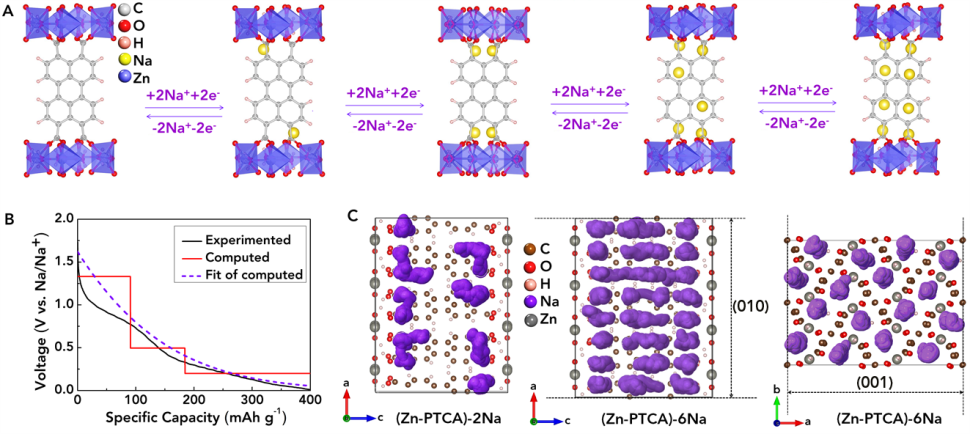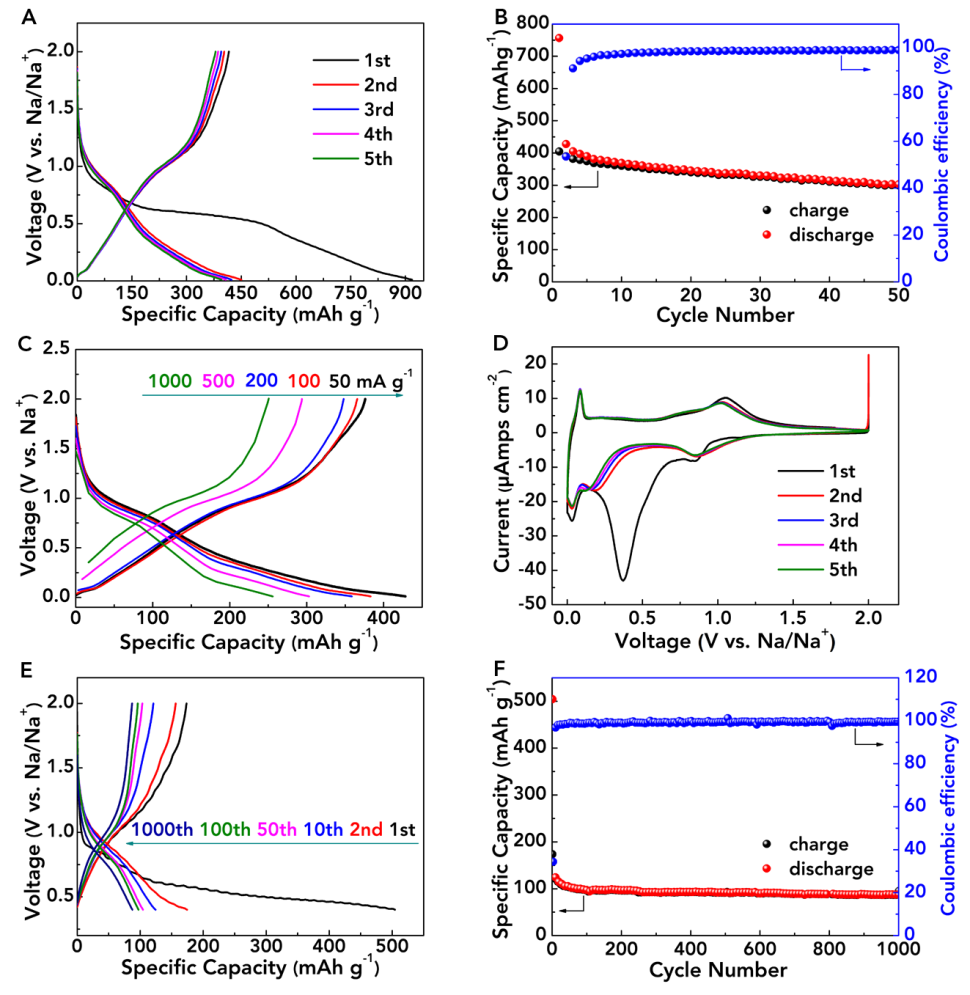Activating Aromatic Rings as Na-ion Storage Sites to Achieve High Capacity
Recently, a research group from Shanghai Institute of Ceramics, led by Prof. Jianjun Liu, designed a 3D wavy-layered structure of metal-organic compound, Zinc perylenetetracarboxylates (Zn-PTCA) as Na-ion anode materials by cooperating with a research group from Huazhong University of Science and Technology led by Prof. Yunhui Huang. It is the first time to realize Na-ion stabilized at the conjugated rings in organic molecules, generating electrochemical activity for Na-ion storage. It was verified to efficiently improve Na-storage capacity in experiment and theory. The research was reported in a new journalChem, a sister journal toCell(https://doi.org/10.1016/j.chempr.2018.08.015).
Metal-organic frameworks (MOF) with large 3D channel structures are constructed by assembling transition metals (or transition metal clusters) and organic molecules. They have been applied in gas adsorption and separation, catalyst design because of adjustable channels, high surface area, and rich organic functional groups. However, MOFs were limited to develop as electrochemical materials due to a low specific capacity. Taking Na-ion battery material as an example, Na-storage in MOF is sited in organic functional groups such as C=O and C≡N. The storage mechanism is well recognized as double bond reorganization mechanism between organic functional groups and conjugation structures. Due to large radii, Na-ions are hardly inserted into the interlayers of conjugated structures. Even insertion, Van der Waals' force between interlayers is destroyed, which further leads to thermodynamic instability and electrochemical inactivity. Therefore, activating conjugation rings for Na-ion storage is of much importance to improve storage capacity, but facing a large challenge.
The research group found that this 3D wavy-layered structure plays an important role in stabilizing Na-storage in sp2-C conjugated rings through comprehensive studies including computational electrochemistry, molecular dynamics,electronic structure analysis. The transition metal ions Zn2+is coordinated with organic molecules by forming local structure of [ZnO6]2-, which prevents traditional layer arrangement between organic rings. The open-framework structures are favorable to improve Na-ion diffusion kinetics and instable factor from Van der Waals' force. The computational design was verified by electrochemical characterization, reaching a significantly high specific capacity of 357 mAh g-1. Zn-PTCA can store Na-ions in functional groups -COO- and conjugated rings sp2-C with two clear insertion-reaction platforms. A series of in-situ characterizations such as XRD, NMR and IR-spectrum indicate the framework structure of Zn-PTCA is well maintained during discharge and charge, therefore exhibiting a good cyclic performance.
This work was supported by projects such as theNational Key R&D Plan, the National Natural Science Foundation of China and Materials Genome Initiative of Shang Hai.
Article link:https://doi.org/10.1016/j.chempr.2018.08.015

Figure 1. The Na-storage schematic diagram of Na-PTCA and Zn-PTCA(imaged by Jianjun Liu)

Figure 2.(A) The most stable position of Na+ insertion; (B) The calculated voltage plateaus of Na+ insertion; (C) Trajectories (purple bullets) of Na+ in Na4C48O20H24Zn4 and Na12C48O20H24Zn4 obtained by the MD simulation.(imaged by Jianjun Liu)

Figure 3. (A) Discharge/charge curves at 50 mA g?1from 0.01 to 2.0 V versus Na/Na+.(B) Cycling performance of Zn-PTCA at 200 mA g?1 in the voltage range of 0.01 to 2.0 V versus Na/Na+.(C) Discharge/charge curves of Zn-PTCA electrode at the current density range from 50 to 1000 mA g?1.(D) CV curves at a scan rate of 0.02 mV s?1. (imaged by Jianjun Liu)
Contact:
Prof. Jianjun Liu
Shanghai Institute of Ceramics
jliu@mail.sic.ac.cn



